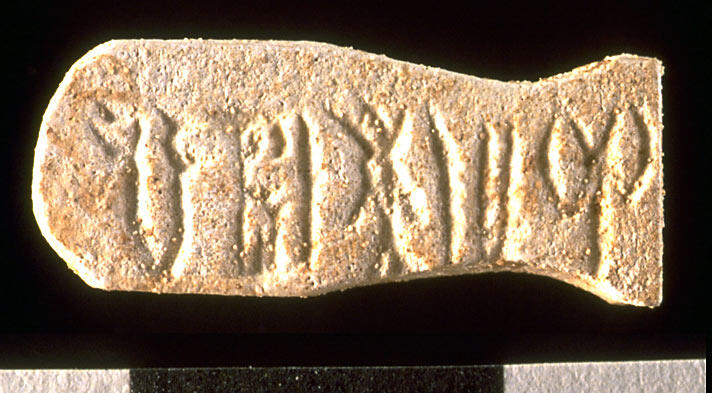An inscribed and baked steatite tablet in the shape of a fish found at Harappa in 2000.
Methods and results of a systematic attempt to decipher the Indus script as a logo-syllabic writing system with Proto-Dravidian as the underlying language are first outlined. Then one so far undeciphered sign is interpreted as depicting an ungulate’s ‘hind leg.’ A phonetic reading is proposed on the basis of its onetime occurrence in front of the plain ‘fish’ sign. (Besides the plain ‘fish’ sign, there are ‘fish’ signs modified by the addition of various ‘diacritics,’ such as a ‘roof’ placed over the fish, a horizontal or diagonal line crossing the fish in the middle, etc.) The sequence ‘hind leg’ + ‘fish’ is likely to represent a compound name of a heavenly body like several other already deciphered sequences, where the latter member of the compound is Proto-Dravidian *miin ‘star,’ homophonous with *miin ‘fish.’ A probable solution (to be tested by a study of other occurrences of the ‘hind leg’ sign) is offered by Old Tamil taaL ‘leg,’ which is once attested as denoting an asterism. Finally, some inconclusive in-depth attempts to decipher other undeciphered signs are recorded. Their purpose is to highlight difficulties due to the scantiness of early Dravidian lexical and textual material.
'Hind Leg' + 'Fish': Towards Further Understanding of the Indus Script was first published in Scripta, Volume I (Sept. 2009) by the Hunmin jeongeum Society.

